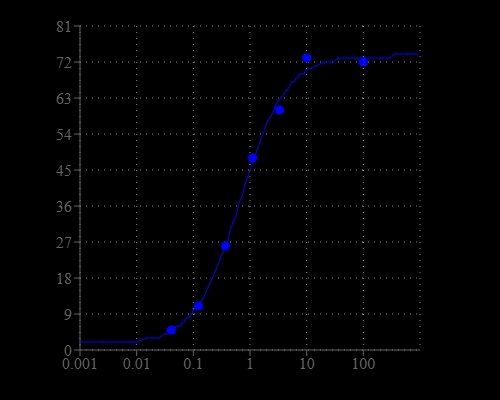Amplite® Colorimetric Superoxide Dismutase (SOD) Assay Kit
Enhanced Sensitivity
Superoxide dismutases (SOD) are a class of enzymes that catalyze the dismutation of superoxide into oxygen and hydrogen peroxide. Superoxide is one of the main reactive oxygen species in cells. It is a substantial contributor of pathology associated with neurodegenerative diseases, ischemia reperfusion injury, atherosclerosis and aging. SODs are an important antioxidant defense in nearly all cells exposed to superoxide radicals. In fact, mice lacking SOD1 develop a wide range of pathologies, including hepatocellular carcinoma, an acceleration of age-related muscle mass loss, an earlier incidence of cataracts and a reduced lifespan. Overexpression of SOD protects murine fibrosarcoma cells from apoptosis and promotes cell differentiation. Amplite® Colorimetric Superoxide Dismutase (SOD) Assay Kit provides a rapid and sensitive method for the measurement of SOD activity. It is well-known that NADH and SOD enzyme system generates superoxide radicals that reduce WST-1 into a yellow color formazan dye that has maximum absorption around 440 nm. SOD inhibits the reduction of WST-1 by catalyzing the dismutation of the superoxide anion into hydrogen peroxide and molecular oxygen, thus reduces the 440 nm absorption of the formazan product. The reduction of 440 nm absorption is proportional to SOD activity. The kit can be performed in a convenient 96-well or 384-well microtiter-plate format.


| Catalog | Size | Price | Quantity |
|---|---|---|---|
| 11308 | 200 Tests | Price |
Storage, safety and handling
| H-phrase | H303, H313, H333 |
| Hazard symbol | XN |
| Intended use | Research Use Only (RUO) |
| R-phrase | R20, R21, R22 |
| UNSPSC | 12171501 |
Instrument settings
| Absorbance microplate reader | |
| Absorbance | 440 nm |
| Recommended plate | Clear bottom |
Contact us
| Telephone | |
| Fax | |
| sales@aatbio.com | |
| International | See distributors |
| Bulk request | Inquire |
| Custom size | Inquire |
| Technical Support | Contact us |
| Request quotation | Request |
| Purchase order | Send to sales@aatbio.com |
| Shipping | Standard overnight for United States, inquire for international |
Page updated on December 27, 2025
